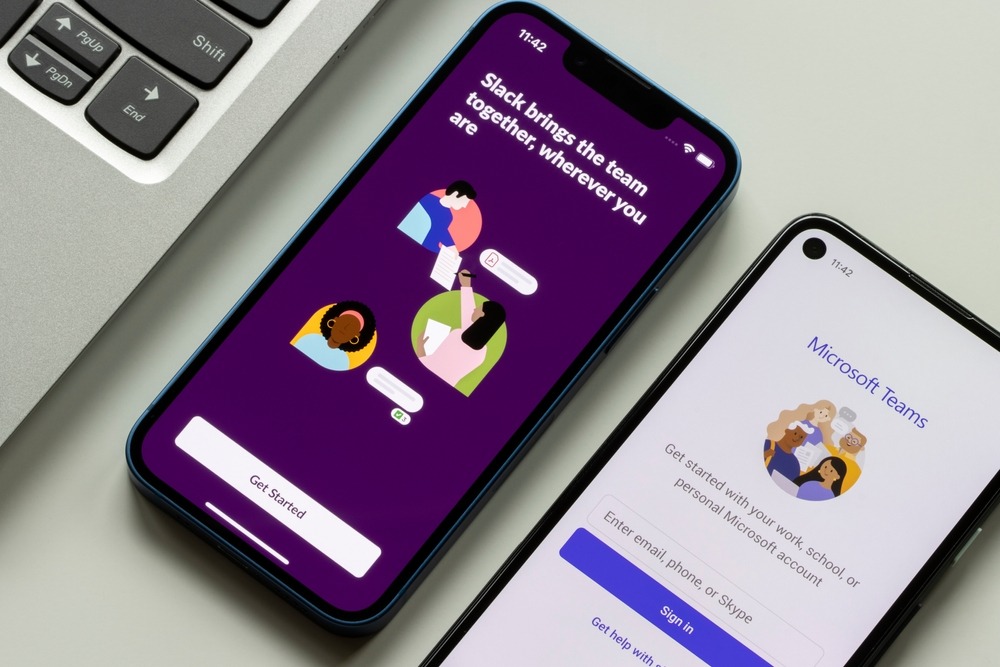
Organizing the productive work of your remote team is more complicated than setting up the in-house team efficient workflow. However, in today’s realities, creating and managing remote teams becomes a necessity, and it’s not just because of pandemics or geopolitical instabilities. After experiencing all the benefits of remote work during the lockdown, many employees are reluctant to return to the nine-to-five office mode. If you don’t offer a remote work option, you are depriving yourself of a huge pool of applicants who got used to working from home.

These eight steps are based on MWDN’s experience in creating and managing remote teams and we hope they will help you to build a virtual team that will stay loyal to your project for a long time.
Eight steps to set up a virtual team work
2020th and 2021st were the years when working remotely became the new normality. The world of 2022 is still full of uncertainties and dangers, which is why many companies are in no hurry to move away from the remote work format. Moreover, many tech businesses are also starting to follow this trend, mainly due to two global benefits of working with off-shore remote teams.
First of all, with access to experts from all over the world, you no longer have to limit your talent search to your city. Secondly, by working with developers who live in countries with a lower cost of living, you can get a significant reduction in salary costs.
However, building teams remotely comes with many challenges. To avoid them, follow our short guide to building effective, engaged teams for your business.
#1 Get on-site help with hiring the best tech talents

How do you see your new team? Are they remote employees who live in the same country? Maybe part of your team works from the office, while the other part is on another continent? Perhaps all members of your team are residents of different countries and the only thing that bonds them together is working for your company. Turn the various options in your mind before moving on to recruiting.
If you want to headhunt remote talents in other countries, consider hiring a contractor as this will save you from unnecessary hassle. Most outstaffing companies, MWDN included, undertake both the recruiting of the specialists you need and their support (salary payments, taxes, counting days off, and so on).
MWDN offers several models for hiring remote employees. You can choose outstaffing if you want to increase your staff with technical specialists from other countries, or you can opt for our recruiting service. Now we are hiring employees not only in Ukraine: We have also started recruiting talents in Israel and the countries of Central and Eastern Europe.
#2 Pay more attention to onboarding
Create extensive documentation on everything a new team member needs to know. Don’t forget about the values, history, and personalities in charge of your company. Provide all necessary access, tell about feedback channels, etc.
Documentation alone is not enough for high-quality onboarding, though. A great thing you can do for a newcomer is to assign them a mentor who can help them and answer their questions about the company’s structure, habits, and personalities.
#3 Solve the time zones problem
One of the common problems of remote teams is the mismatch of their time zone with the time zone of the company they’re working for. You can deal with this challenge by allocating hours when your in-house team can get in touch with their off-shore colleagues.
Keep in mind that the rules for office work are not the same as the rules for remote work. Each person has their most productive and useless hours during the day. Only a few are able to stick to the nine-to-five schedule at home. Someone may be most effective at night, someone will prefer to work a few hours on weekends in order to have fewer working hours and more freedom on weekdays. Discuss the working schedule individually with each employee so you can make your cooperation as comfortable and as productive as possible.
#4 Use efficient tools for remote work

Tech talents often need high-quality and expensive equipment for productive work. Sending a laptop to a remote employee within one country is okay, but you will surely not send computers to the other end of the world. Ask your outstaffing contractor to take care of the hardware for your remote employees instead.
Your area of responsibility is to give the employee access to the software and communication tools that your team uses. Choose Slack for direct communication, Skype, Google Meets, or Zoom for meetings, Jira or Notion for task management, Confluence for storing and writing documentation, cloud collaboration services for working together on documents and projects, etc.
#5 Think of clear and transparent KPIs for your team
A remote employee needs more feedback than an in-house teammate. Explain to your specialists what is expected of them and what tasks they must cope with within some deadline. Clearly defined OKRs (objectives and key results) and KPIs (key performance indicators) will help your teammates to understand how their work is evaluated. Transparency and honesty in assessing employees become vital when managing a remote team.
Share an overall company roadmap to motivate employees to strive more toward personal goals. This way they will see that by effectively completing their small tasks, they are contributing to the accomplishment of the big business goals.
#6 Interact with your team

Online meetings are an important part of remote team communication.
- One-on-one meetings every week or two are a great tool to discuss both work issues and learn a little more about your employee as a person.
- Short daily sync meetings for 15-20 minutes will keep the team synchronized.
- Occasional meetings twice a year where you share success stories and tell about the company’s plans for the near future will help our employees feel involved and engaged.
- At least once a year, hold general meetings for the entire company so that employees better understand the structure, tasks, and goals of the business.
Some companies believe that cameras turned off make team members more comfortable but in MWDN, we believe that seeing your team is important. By turning on the cameras, you can communicate more effectively as you will be able to read your team’s non-verbal cues and react faster if someone on the team wants to complement or interrupt the speaker.
Don’t take it too far with the meetings. At least 50% of the working time of tech talents without managerial functions should be devoted to the direct performance of their work tasks. Give your teammates some time without meetings.
#7 Use time tracking software, but only if necessary
Of course, if you can base your cooperation with the remote team on trust, it’s better to avoid using tracking software. It’s always better to show trust and confidence in your new teammates and let them fill in the hours they put in on a task by themselves. Task managers like Jira will be a great choice.
However, if you need to have more control over your team, you can ask your remote employees to install time-tracking software that will take screenshots of their screens during working hours and monitor all employee activity on the web. If you decide to resort to this method, it is crucial to inform job applicants before they sign a job offer, otherwise, tracking software can cause a lot of negative feelings towards you and your company.
#8 Help your team become closer
In companies working in offices, corporate principles and culture are created almost by themselves – each employee contributes to the working atmosphere, establishing friendly ties with coworkers. It’s much more complicated with a remote team – you need to make an effort so that a group of people who have never seen each other start to feel like one unit.
So how to team build with remote employees? Work meetings alone may not be enough to create friendly ties among remote coworkers. One of the ways to make your teammates know each other better is to encourage them to add each other on personal social networks. This will stimulate informal communication within the team.
Show personal interest in the lives of your employees. Asking “how are the kids” at the beginning of a work call will show the employee that they are important to you (which will most likely increase their productivity).
Be flexible
Maintaining a life-work balance can be a tricky task for remote workers. If you’re looking for long-term, quality cooperation, help your employees strike a balance. Some companies praise working overtime and on weekends, however, this approach can cause a wave of burnouts for your employees. If you want to build a long-term relationship with an employee, respect their priorities.
Enjoy virtual employee engagement activities

People are more loyal to the people they like, but developing affection for someone they have never met can be more difficult than in a live conversation. You need to help employees become good pals as employees who treat each other well are not just happier, they are also more productive at work. You can bring people together by assigning them to work on the same project, even if their collaboration is not so necessary for the business. This will allow them to feel like they are part of one whole, your organization.
Activities for remote employees are certainly a lot more difficult to organize than a live teambuilding party, however, there are a few tools you can use.
For example, instead of having a Friday night cocktail at the office, send a cocktail set to each employee’s home so that everyone can get together for a common drink in front of the camera, no matter where they live.
You can also arrange remote team competitions by breaking the team into several groups that would compete with each other, for example, in a quiz.
Use virtual team-building software
A human being cannot maintain a sharp focus on work tasks for eight hours straight, your workers will get distracted. Help them get distracted together as a team. For example, you can create a separate Slack channel dedicated to non-work-related chatter. Show employees that being distracted is normal and no one will judge them – upload funny memes or interesting links to this off-topic channel several times a week.
Communication software for businesses have even more remote team social ideas. Try out games via Zoom (like the Heads Up! card game) or Trivia games on Slack. There are also many activities that do not require apps. For example, ask each employee to write one truthful and one false statement about themselves and let their teammates discuss the options. This will help each employee to tell something interesting about themselves to their colleagues.
How to build a virtual team with MWDN?
To keep up with the new reality, we plan to open new offices in Budapest and Warsaw in addition to our main office in Kyiv. We already begun recruiting technical talent in Eastern Europe and Israel. So, when you chose MWDN, you get access to Ukrainian, CEE, and Israelian experts.
We have two main models of cooperation. If you decide to augment your staff with MWDN, our tech talents, becoming part of your team, remain legally registered in our company, which means that we fully undertake salary payment, taxes, equipping our employees with necessary tools, and so on.
If you need help in recruiting, being on the ground in Ukraine, CEE, and Israel, the MWDN team will help you select the best candidates to fill your open positions.
At MWDN, we know how to build a team remotely and are happy to share our expertise with you. Contact us to find out more about the possibilities you get when working with us.
Content
- 1 Eight steps to set up a virtual team work
- 2 #1 Get on-site help with hiring the best tech talents
- 3 #2 Pay more attention to onboarding
- 4 #3 Solve the time zones problem
- 5 #4 Use efficient tools for remote work
- 6 #5 Think of clear and transparent KPIs for your team
- 7 #6 Interact with your team
- 8 #7 Use time tracking software, but only if necessary
- 9 #8 Help your team become closer
- 10 How to build a virtual team with MWDN?
